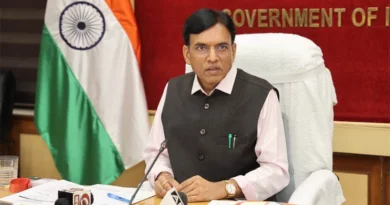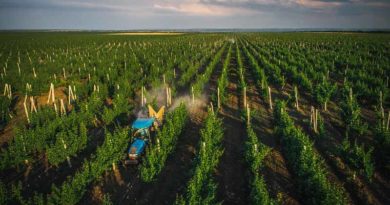UPL promotes sustainable agriculture program ‘ProNutiva Sada Samrudh’ for groundnut farmers
26 May 2021, Ahmedabad: UPL Ltd., global provider of sustainable agriculture products and solutions, today announced the scaling up of its ProNutiva Sada Samrudh Groundnut program in Gujarat. The program aims to increase the productivity and enhance the quality of groundnut crop by applying sustainable agronomy practices including proper training, technology interventions and farm mechanization. The program is expected to benefit over 1 million groundnut farmers across the state in the next three years with enhanced yields and income and generate employment opportunities for the local youth. Gujarat is the largest producer of groundnuts in India.
Also Read: Strengthening health and agri-food systems must go hand-in-hand
The first pilot program was implemented with 8,500 farmers, which was taken up in the year 2020 in the key groundnut belts in Gujarat which helped double their yields and income. The outcome of the program has been assessed by Grant Thornton, a global consulting firm and concluded that the pilot program led to an increase in overall yield in terms of plants per square meter and more flowers and pods per plant. The assessment also suggested reduction in cost of production per acre compared to the areas where the pilot was not implemented. The report showed an increase in Pod Yield by 132%, fodder yield by 125% and oil yield by 26%. The revenue increase from yield per acre has been around 21 per cent and the reduction in cost of production per acre has been around 26 per cent.
UPL Ltd has been on boarding farmers to the Pronutiva program –which is a solutions portfolio with a combination of conventional and bio-solution products and services products for crop establishment, crop protection and crop nutrients, services such asweather forecasting, rain gauging, soil testing, farm mechanization and crop advisory services. As a part of the program, UPL will also provide sanitization, employment, spraying service for white grub in the villages and provide an access to its mobile application – nurture.farm. The unique application not only provides stage wise crop advisory with details related to farming, sowing and also a scanner to identify fake products which have infiltrated the market.
One of the most innovative solution used in the program is the patented technology ZEBA, which absorbs water and nutrients and releases it to the plant when its needed by the plant.
Commenting on the success of the program, Sameer Tandon, Regional Head for ASEANZ, UPL Ltd shares, “We, at UPL, are dedicated to the welfare and prosperity of the farmers who are our key stakeholders. We aim to partner with farmers to build a resilient and sustainable farming ecosystem by reducing risk and improving the quality of life of farmers. The farmers in Gujarat, India’s highest groundnut producing state, were facing issues such as white-grub infestation, water management, soil nutrient deficiency. We, through the ProNutiva Sada Samrudh Program aim to increase the yield and unlock the income potential of groundnut farmers in Gujarat using strategic, sustainable and scientific methods. We are incredibly proud of the results that our efforts have yielded and hope to reach more farmers this year.”
Ashish Dobhal, Regional Head of India, UPL Ltd, mentions, “UPL has always endeavoured to holistically and sustainably improve each crop, and this program has done just that. The results of our groundnut program in Gujarat have been great not only because of the increased yield but also because of the reduction in cost for the farmers.”
Maheshbhai Kotadiya, a groundnut farmer from Nana Kotada, Junagadh, stating his experience, said, “I used the ProNutiva solutions last year which helped me in getting high quality and better production of groundnut..”
Another farmer, Dinesh bhai Rupala from the village of Ishvariya, Amreli shared, “I started farming with the help of UPL Pronutiva Program. It has been a great experience from crop establishment to harvest and pest infestation or diseases were effectively controlled..”















